Brightening these bleak, wintry days with splashes of cheerful colour are the dainty tea-trees (genus Leptospermum), seen in many gardens in Paluma. Several beautiful specimens of this plant can be seen in the garden of the Rainforest Inn, where shrubs representing two or three varieties of tea-tree grow in a cluster. One shrub bears deep pink flowers, while the others range through paler pink to almost white.
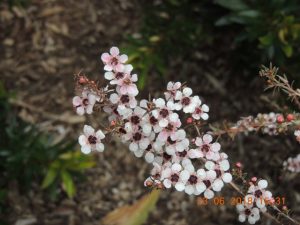
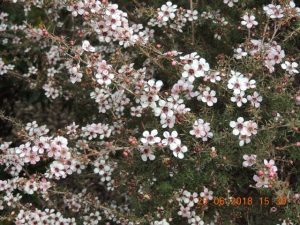
Pale pink tea-tree (photo by Michele Bird)
The common name, tea-tree was derived from early attempts by settlers to use the aromatic leaves of some species as a substitute for tea. Capt. James Cook also, is said to have experimented with using the leaves to make tea.
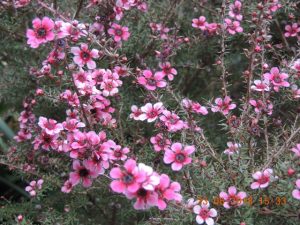
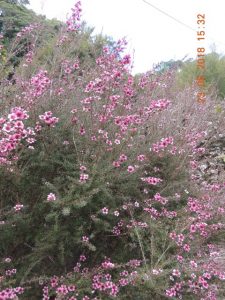
Deep pink tea-tree (photo by Michele Bird)
Currently 86 species are recognized, 83 of which occur in Australia. The first formal description of Leptospermum was by German botanists, Johann Reinhold Forster and his son, also Johann. A clear definition of the species was not achieved until 1979 and since then many more species have been described. The wood of tea-tree is very hard and has been used for turning, carving and tool handles, as well as durable brushwood fences.
Another eye-catching shrub is the Snowflake Tree, a species of Euphorbia. An example of this plant can be seen in Lennox Crescent where a lovely specimen is densely covered with small white flowers. From a distance the tree looks as if it is snow-covered.
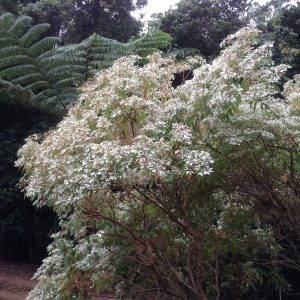
There are 2100 species of Euphorbia. The red Poinsettia, of which a few grow in Paluma gardens, is one most people would be familiar with. Another variety is the bright red, spiny ‘Crown of Thorns’ which adds to the brilliant colour in the garden at Number 40 Mount Spec Road.
Other flowering plants bringing colour to the village are notably, Camellias, Azaleas, Hibiscus and the ever reliable Balsam (Impatiens).
Text by Colwyn Campbell
